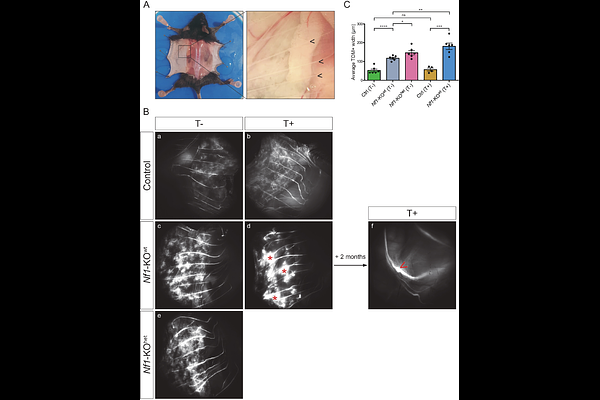Exploring the mechanisms governing the initiation of plexiform neurofibromas using Prss56Cre,Nf1-KO mouse model at a single-cell resolution

Exploring the mechanisms governing the initiation of plexiform neurofibromas using Prss56Cre,Nf1-KO mouse model at a single-cell resolution
Mansour, M.; Onfroy, A.; Coulpier, F.; Radomska, K. J.; Wolkenstein, P.; Topilko, P.
AbstractAbout half of patients with the genetic disease Neurofibromatosis type 1 (NF1) develop benign nerve sheath tumors, called plexiform neurofibromas (pNFs). Despite important advances in understanding the pathogenesis of pNFs, mainly due to the plethora of dedicated mouse models, the mechanisms responsible for the initiation of this process remain poorly understood. Here, we used a Nf1-KO mouse model targeting biallelic loss of Nf1 in boundary cap cells on a wild type and heterozygous Nf1 background to explore the early events driving pNFs development. All mutants develop subcutaneous hyperplastic nerves with some progressing into pNFs from one year of age. We discovered that skin trauma accelerates this process, highlighting the role of inflammation. While skin trauma has no effect on control subcutaneous nerves, in the mutant nerves on a wild-type background, we observed an expansion of mutant Schwann cells expressing a profibrotic program. A similar response was observed in the mutant nerves on a heterozygous background without skin trauma, highlighting the impact of Nf1 heterozygosity in the nerve micro-environment on the development of pNFs.